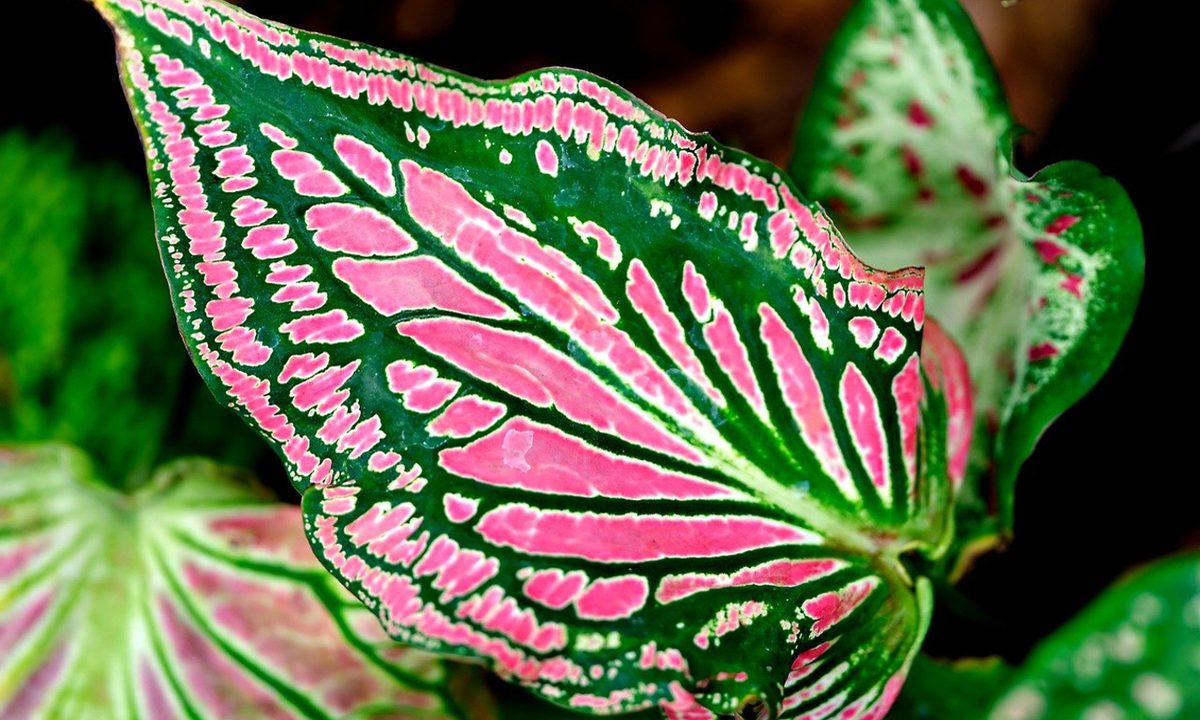There are many colorful foliage plants you can add to your home or garden, but caladium is a favorite of many gardeners. It’s easy to grow both indoors and out, and its colorful leaves are incredibly cute. If you want to try growing this lovely tropical plant, then this is the guide for you. Whether you plan on growing it indoors in a container or outdoors in your garden, we’ll explain everything you need to know about caladium care.
Planting caladium
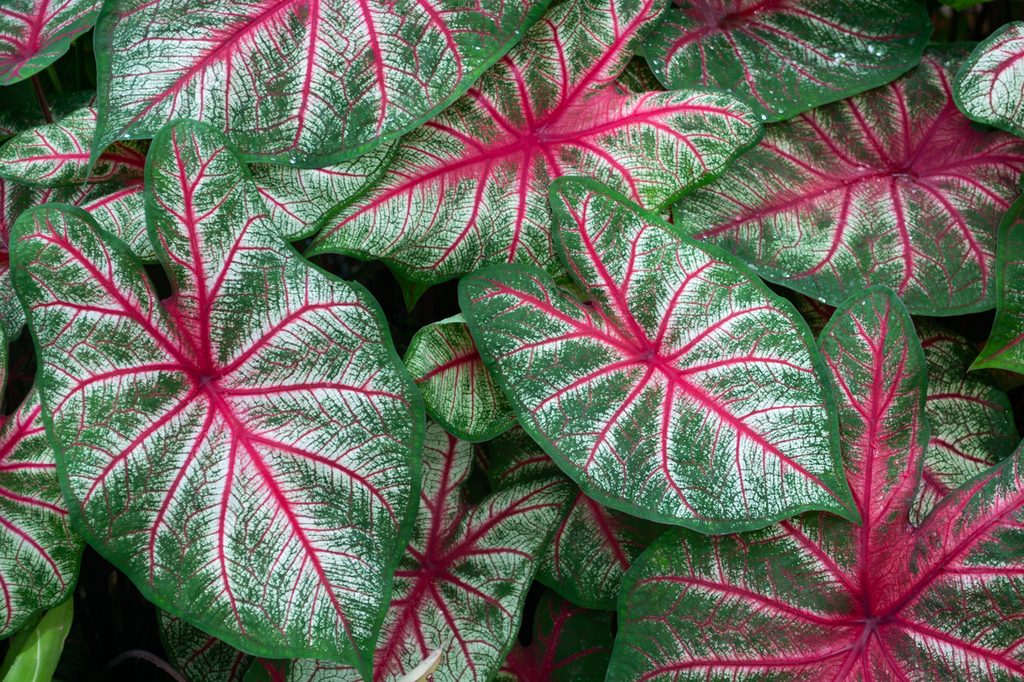
You should plant your outdoor caladiums after the last frost of the year has passed, once the soil has begun to warm up. Indoor caladiums can be planted at any time, provided you can keep them warm. Plant your caladium in well-draining soil. Be sure the bulb is facing the right direction. Caladium bulbs will have eyes, similar to a potato that is sprouting. These eyes will be raised bumps, and they may already be sprouting slightly. The eyes should be facing up, as this is where the plant will grow from. Bury them so that the top of the bulbs are 1.5 to 2 inches deep.
Whether indoors or out, position your caladium plants in partial or filtered light, and avoid putting them in direct sunlight. Too much direct light can scorch their leaves. Partial shade is ideal for outdoor plants, while indoor caladiums will appreciate a sunny window with a light or gauzy curtain over it.
Caladium care
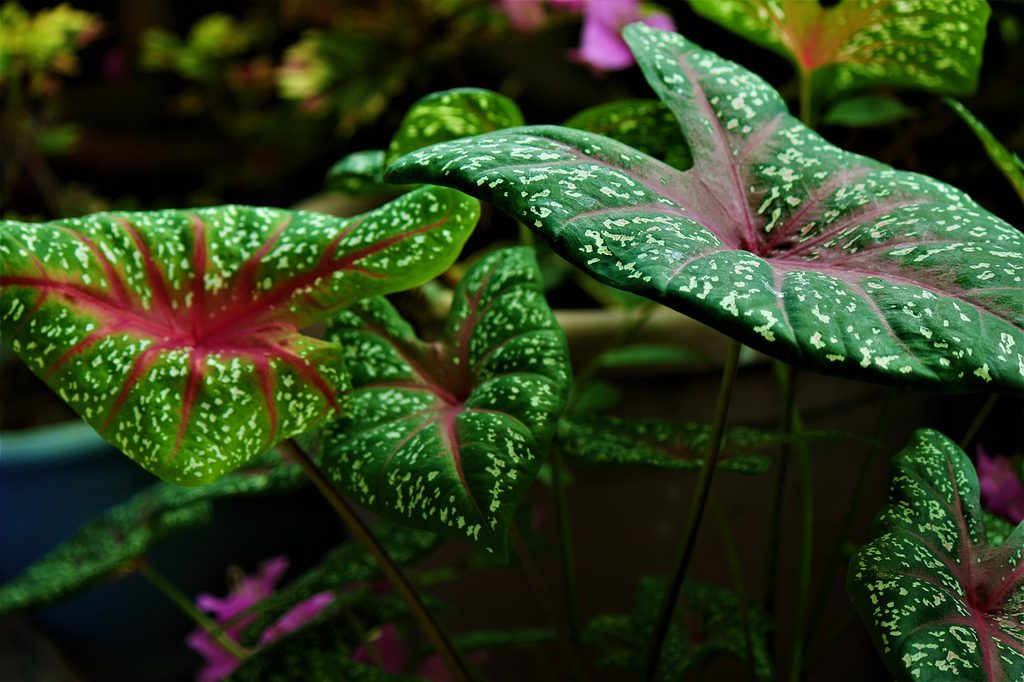
Caladium care is fairly simple. Water your caladium plant weekly during spring and summer. Avoid watering caladium plants if the soil is still wet, but if the soil is dry, then it’s time to water it. Reduce watering during fall and winter as your caladium plant goes into dormancy. Keep your indoor caladium plant warm through winter. Outdoor caladium plants will appreciate some mulch to help keep them warm as well, but they may not survive the winter even with mulch. Caladiums are hardy in zones 8 to 13, but north of that, they are typically grown as annuals or brought indoors.
Caladium plants growing in your garden may not need fertilizer, although you can give them a boost with a balanced fertilizer or compost. Caladiums growing in containers will need fertilizer to replenish the nutrients in the soil. Any houseplant fertilizer will work, but some gardeners prefer fertilizers formulated for foliage plants. Regular applications of a liquid fertilizer or less frequent applications of a slow release fertilizer are ideal.
Pests and problems
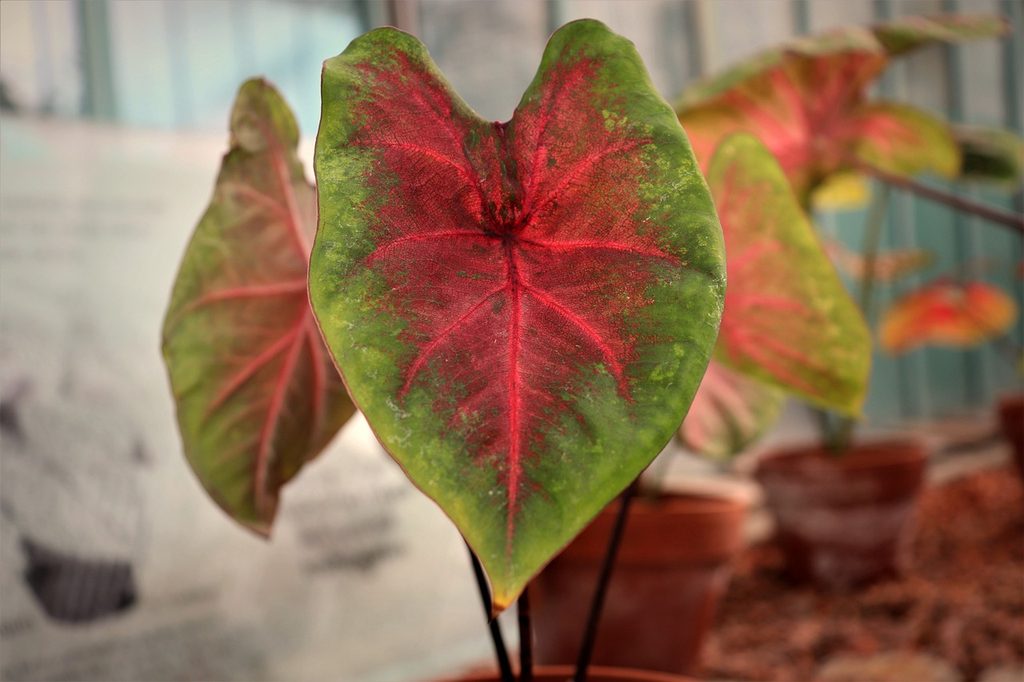
Caladium plants don’t have many common problems with pests or diseases. Common garden pests such as aphids, spider mites, and caterpillars may snack on your caladium’s leaves from time to time. These pests rarely do serious damage, but if you’re concerned about the cosmetic damage or the infestation is severe, there are a few ways to control these pests.
The easiest is to use an insecticidal soap or neem oil. You can also remove larger pests, such as caterpillars, by hand. Smaller pests can be removed by dusting the leaves with a dry washcloth. The best defense against pests like these is proper caladium care. Strong, healthy plants can resist and recover from pest damage much more quickly than weaker plants.
Should your caladium be indoors or outdoors?
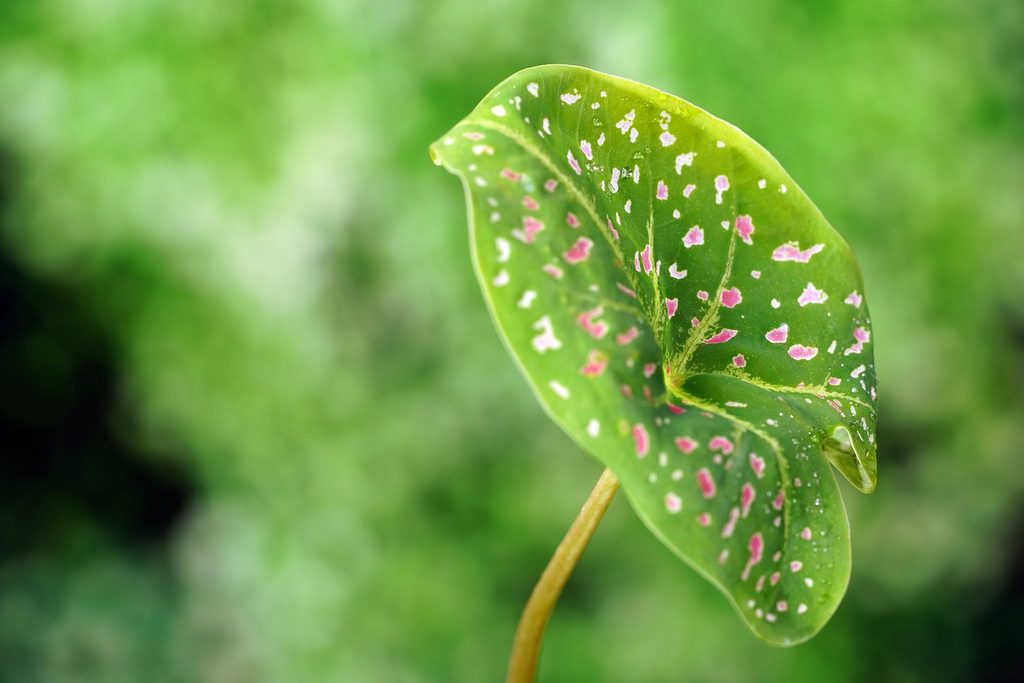
Caladium plants are tender perennials, meaning they are perennials in hot climates and annuals in cooler climates. If you don’t mind growing your caladiums as annuals, you can grow them outdoors no matter where you live. If you want to keep your caladiums as perennials, you’ll need to pay attention to the hardiness zones. If you live in USDA hardiness zone 8 or south, then you can grow caladiums as perennials outdoors. If you live in zone 7 or north, you’ll need to keep them indoors during fall and winter. During spring and summer, a potted caladium can stay outdoors as long as the last frost of the year has already passed.
Do caladium plants spread?
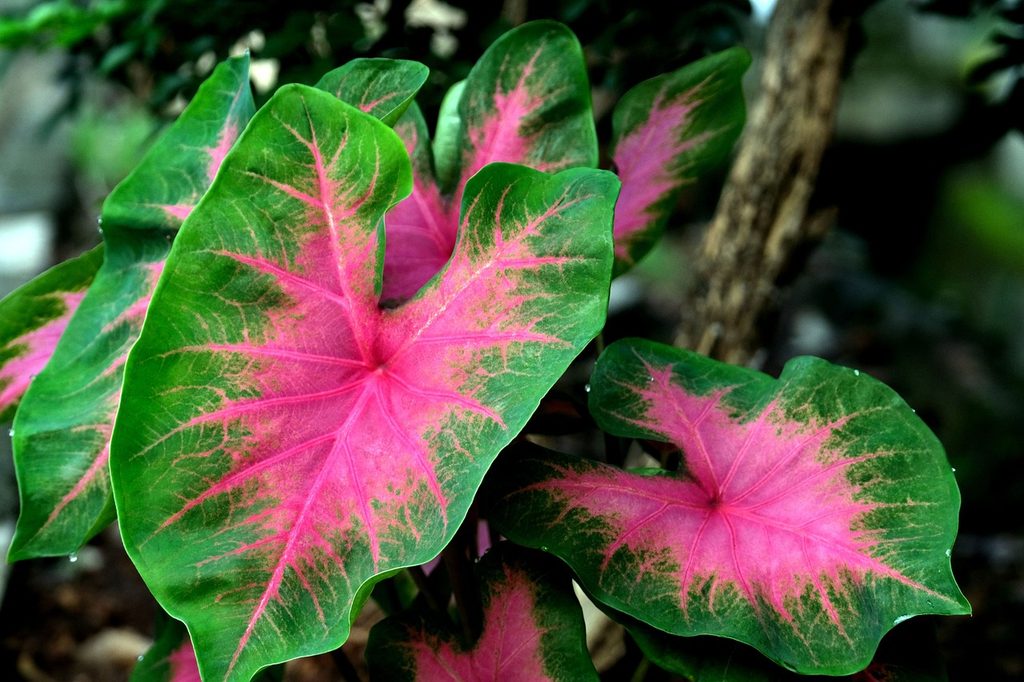
Caladium plants do not spread the way other plants do. Aside from simply growing larger, your caladium plant will stay wherever you plant it. However, you can spread your caladium through propagation if you want. Caladium plants can be propagated through stem cuttings, similar to other plants. They can also be propagated through division. Stem cuttings should contain more than one leaf, and can be propagated in soil or water. Dividing the roots takes longer and is more involved, but is generally more reliable. Cut the tuber into multiple sections and plant them separately. Each section should have at least one eye.
Caladium plants are beautiful and easy to care for. Whether you’re a beginner or an expert, and are planning to have it in your garden or grow it in a container, you’re sure to enjoy the lovely colors of your caladium plant. If you keep it indoors, it’s best to keep it out of reach of your pets, though. Caladium is toxic to dogs and cats, as well as people.
